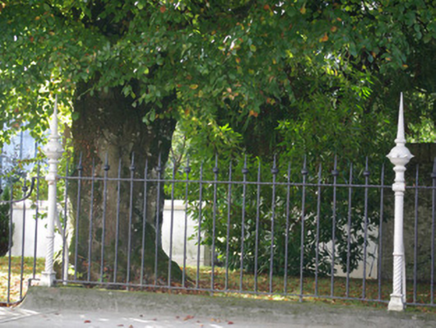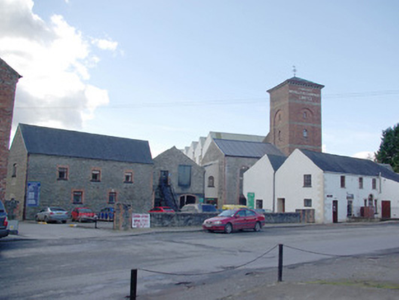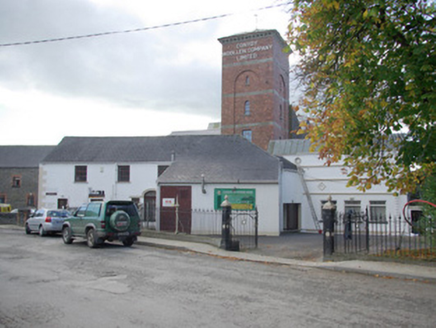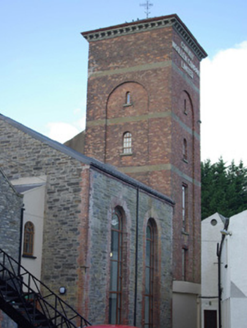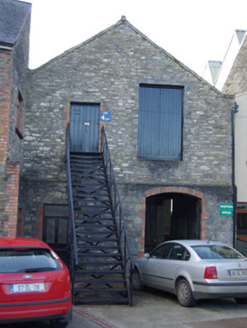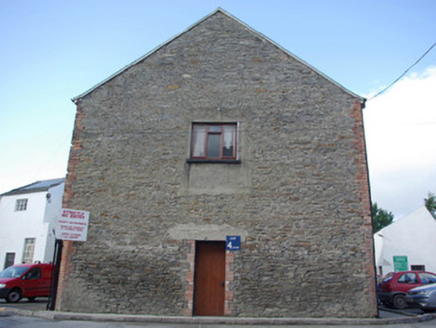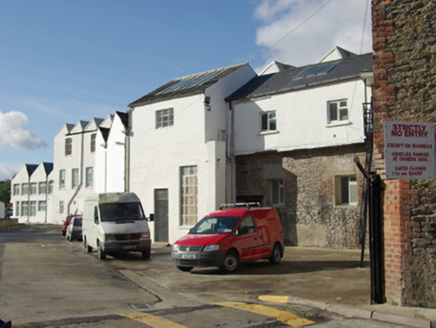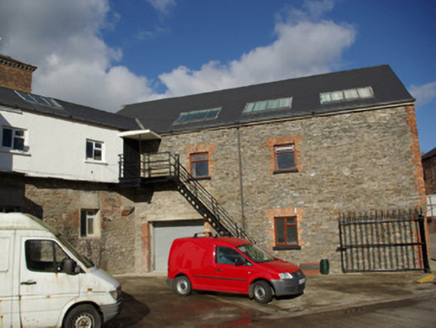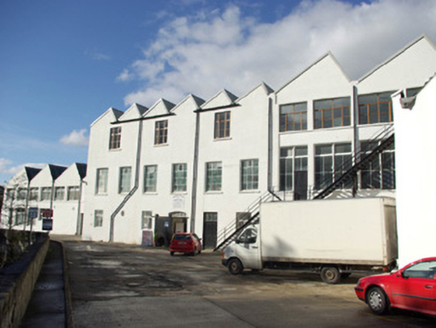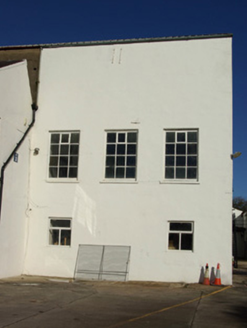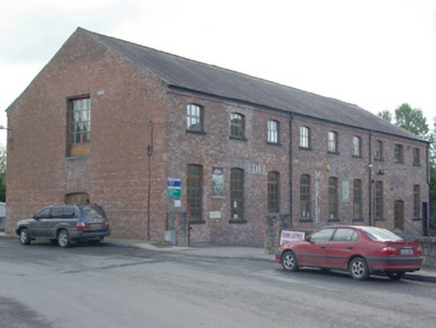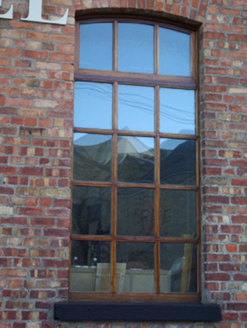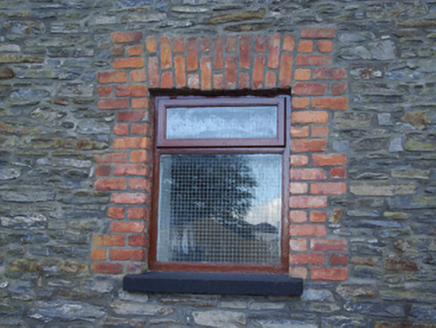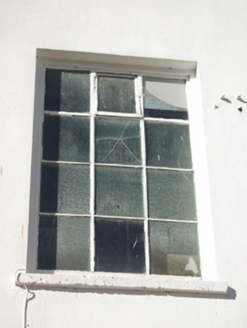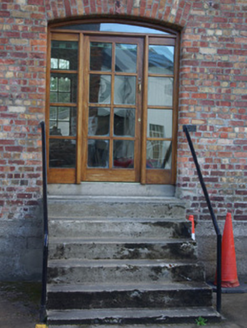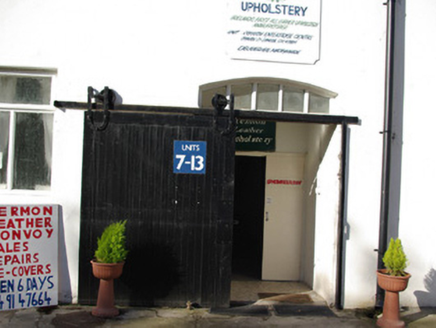Survey Data
Reg No
40832018
Rating
Regional
Categories of Special Interest
Architectural, Historical
Original Use
Mill (water)
In Use As
Office
Date
1880 - 1885
Coordinates
221966, 401206
Date Recorded
17/10/2007
Date Updated
--/--/--
Description
Detached former woollen mills on complex irregular-plan, built 1883 and greatly extended in 1905 and 1911-12, having main eight-bay three-storey block with single-bay five-stage Italianate tower (on square-plan) offset to the north-west corner, two-bay two-storey double-height former boiler house attached to the north-east corner, multiple-bay double-pile two-storey block to the north, ten-bay two storey block to the west, and two-bay two-storey gable-fronted building to the north-east having three-bay two-storey block attached to the east elevation. Now in use as enterprise centre with various commercial, retail, craft premises and a café to site; various modern additions and alterations particularly to the south. Saw-tooth north-facing multi-pitched roofs to main mill building and extensions to the south having modern metal-clad covering and with glazed sections to a number of the north faces in places; pitched slate roofs to the majority of other structures to site; pyramidal natural slate roof to tower having bracketed ashlar eaves course and cornice. Red brick eaves course to former boiler house. Cement rendered walls to main mill building and to the majority of extensions and additions; rubble stone walls with flush red brick block-and-start quoins to the corners of two-storey building to the north-west and to former boiler house to the east of tower with rubble stone walls to gable-fronted building adjacent to the east; red brick construction to tower having flush ashlar or cement rendered stringcourses delineating stages, and with four-storey round-headed recesses to the centre of each face. Recessed text to the north face of tower below eaves level reading ‘Convoy Woollen Company Limited’. Square-headed windows to main mill building and to various extensions to the south having mainly multi-paned steel-framed windows with pivoting lights, some modern replacement window fittings. Round-headed window openings to tower having stone sills and replacement windows. Full-height round-headed window openings to former boiler house having red brick surrounds with red brick keystone detailing, and with replacement window fittings. Square-headed window openings to the block to the north-east and to the gable-fronted building having red brick surrounds and replacement windows. Mainly square-headed window openings to blocks to the north and the west having replacement window fittings. Square- and shallow segmental-headed doorways to site having mainly modern fittings; square- and segmental-headed carriage-arches and loading bays to site having some remaining timber doors and double doors, replacement fittings elsewhere. Red brick surrounds to some door and carriage-arch openings to rubble stone buildings. Shallow segmental-headed former carriage-arch to the east face of main mill building having sliding timber door with surviving iron/steel wheels and mechanism. Detached nine-bay two-storey former wool store to the east, now in use as a retail outlet and café, having pitched slate roof with projecting red brick eaves course, red brick walls (English Garden Bond), and shallow segmental-headed window and door openings with replacement fittings. Set back from road in extensive grounds to the south-east of the centre of Convoy and on the north bank of the Deele River. Tarmacadam car parks and yards to site. Plinth wall to the north of site having iron railings over with spear finials over; vehicular gateway to the north having a pair of decorative cast-iron gate posts with moulded detailing, acorn finials over, and with a pair of decorative wrought-iron gates. Other wrought-iron gates to site. Enclosure to the north-west with mature trees bounded by iron railings having cast-iron finials and with moulded cast-iron posts at intervals along length.
Appraisal
This large-scale late nineteenth century former woollen mills retains much of its original character and form despite the construction of multiple later extensions and alterations, and the recent conversion to new uses following a period of disuse during the 1980s and 1990s. It also retains some of its early fabric including some natural slate roofs and a number of early steel-framed windows to the main mill building. Of particular interest is the soaring and well-detailed tower, which is a local landmark. The square-plan of this tower, the shallow hipped roof with bracketed ashlar eaves cornice, and the round-headed openings and recesses lend this structure a strong Italianate architectural character. The form and appearance of this feature is reminiscent of the towers found at a number of the monumental cotton mills etc. that were built and altered in Lancashire and Yorkshire in the north of England during the mid-to-late nineteenth century/Victorian era. The rubble stone former boiler house to the east of the tower is another interesting structure with extensive red brick trim and full-height round-headed window openings. This woollen mill at Convoy was originally built in1883, and it can be seen as being part of a wider craft and factory movement in County Donegal during the late nineteenth and early twentieth century that witnessed the construction of a carpet factory in Killybegs, a woodworking studio in Ballyshannon, a shirt factory at Letterkenny, and the establishment of a network of lace schools and workshops throughout the county. There are references to a textile mill at Convoy dating back to 1803 at the latest, while a flax and tuck mill, and a corn mill, are indicated at this location in 1837 (Ordnance Survey first edition six-inch map). Convoy Woollen Mill provided employment for over 40 workers by the end of the 1880s and Slater’s Directory of 1894 records that this mill gave employment to over 100 persons, produced mainly tweeds, friezes, blankets, ‘ladies costume materials’, and shawls, and operated 20 looms and 1000 spindles. A James J. Browne was the manager and a John S. Weir JP Esq. the managing director at this time, while a George Johnson was the main agent. The mill was very prosperous by the turn of the century, and it was greatly extended at a cost of £8,108 in 1905 to designs by Matthew Alexander Robinson (1872 – 1929), an architect and engineer from nearby Derry. The main contractor involved was a H. Laverty & Sons of Belfast. The mill was soon extended again in 1911-12 to designs by the firm Robinson and Davidson of Derry (James Moore Caldwell Robinson, brother of Matthew who carried out the 1905 works, and John Adam Davidson). These works included the construction of including ‘new wool stores (the detached red brick building to the east of site), secretary's house, finishing room, dye house, water tower for sprinklers’. The main contractor involved was again H. Laverty & Sons of Belfast. The appearance of the mill complex today and the majority of the buildings to site date to these two early twentieth-century phases of construction. The mill continued to boom during the first decades of the twentieth century, employing reputedly 400 people at one stage. After Independence, the Irish military were one of the major customers for Convoy Woollen Mills, and supplied over 45,000 yards of serge for uniforms, 15,000 yards of whipcord for breeches, and 10,000 yards of Grey Woollen Shirting in 1927-8 alone. The mill went into decline after the Second World War and finally closed in the mid 1980s, which was a hard economic blow for the Convoy area as one of the major employers in this part of Donegal. It reopened as an enterprise centre in the 1990s and is again a focal point for the local community. This substantial complex is an important element of the built and industrial heritage of County Donegal, and an integral element of the social history of the local area. The various iron railings and gates, and the cast-iron posts and gate posts to site add significantly to the setting, and complete this interesting composition.
